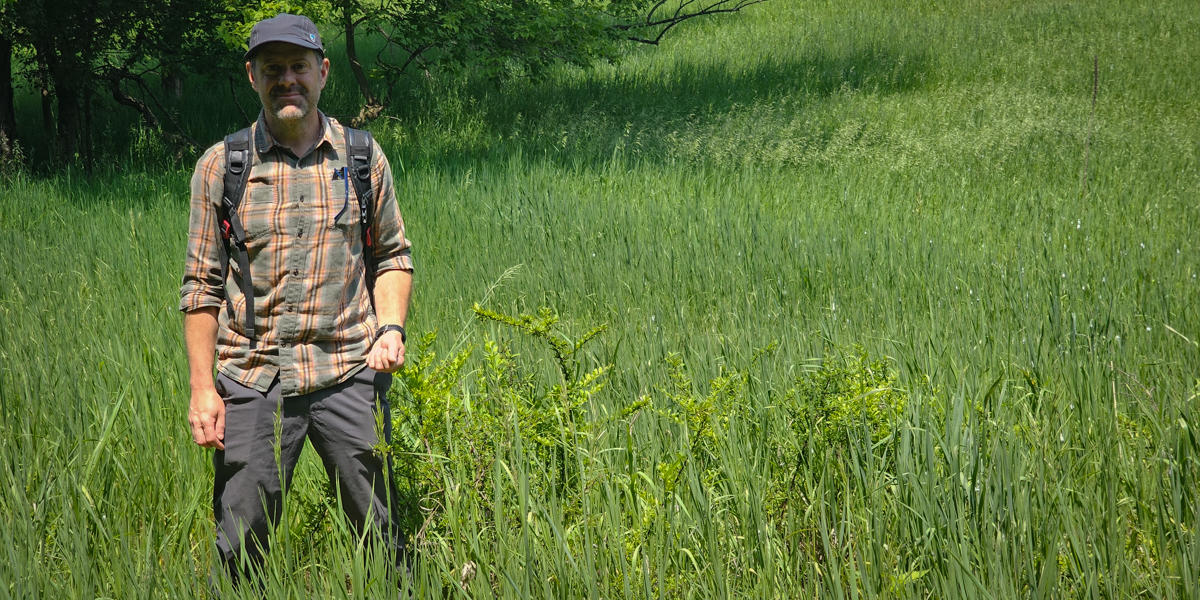
Pablo D. Olivera Firpo, PhD, with a barberry plant at Afton State Park, MN. Image credit: Jyoti Sharma.
Background
Common barberry and Japanese barberry are both terrestrial invasive species that have spread throughout the United States including Minnesota. These species also readily hybridize, resulting in Berberis × ottawensis, another species which can host cereal rust diseases that threaten wheat and small grain production.
Researchers know that this hybrid is present in Minnesota, but accurate identification is difficult, and a definitive survey has never been conducted. Doing so is important to assess the threat it poses to both agricultural systems and forest health.
Research questions
- Where is B. × ottawensis present in Minnesota?
- How can B. × ottawensis be identified?
- How susceptible are hybrids to stem rust, and what threat do they pose to Minnesota’s small grain producers?
Outcomes
Principal investigator Firpo and team developed a protocol to accurately detect the parental and hybrid alleles enabling accurate identification of hybrid barberry. It can be adopted by any standard laboratory.
Using the identification protocol, the researchers confirmed the presence of hybrid barberries in Minnesota. Over the span of two years, they collected plant samples of hybrid barberry with rust and found necrotic spots on some samples, infected by Puccinia striiformis f. sp. poae (stripe rust of Kentucky bluegrass). This suggests hybrid barberries may be susceptible to stem rust.
Outreach
- UMN Department of Plant Pathology Seminar Series, 2023 - “Development of molecular diagnostic tools to detect hybrid barberry (Berberis ×ottawensis) and investigating its role in stem rust epidemiology” by Jyoti Sharma (video, 32 minutes)
- College of Food, Agriculture and Natural Resource Sciences Research Symposium, 2023
- North American Cereal Rust Workers Workshop, 2023
- Upper Midwest Invasive Species Conference, 2022, 2023
- Contributor to Aurora Sporealis, a publication from the UMN Department of Plant Pathology, 2021